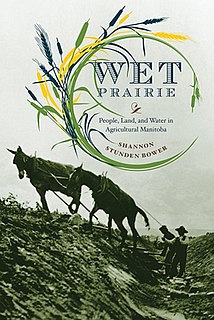 W
WManitoban culture is a term that encompasses the artistic elements that are representative of Manitoba. Manitoba's culture has been influenced by both traditional and modern Canadian artistic values, as well as some aspects of the cultures of immigrant populations and its American neighbours. In Manitoba, the Minister of Culture, Heritage, Tourism and Sport is the cabinet minister responsible for promoting and, to some extent, financing Manitoba culture. The Manitoba Arts Council is the agency that has been established to provide the processes for arts funding. The Canadian federal government also plays a role by instituting programs and laws regarding culture nationwide. Most of Manitoba's cultural activities take place in its capital and largest city, Winnipeg.
 W
WBigfoot, also commonly referred to as Sasquatch, is an ape-like creature that is purported to inhabit the forests of North America. A prominent subject within Canadian and American folklore, supposed evidence of the existence of Bigfoot includes a number of anecdotal visual sightings as well as disputed video and audio recordings, photographs, and casts of large footprints. Some of these are speculated or known to be hoaxes. Bigfoot has become an icon within the fringe subculture of cryptozoology and an enduring element of popular culture.
 W
WBungi is a dialect of English with substratal influence from Scottish English, the Orcadian dialect of Scots, Norn, Scottish Gaelic, French, Cree, and Ojibwe (Saulteaux). It was spoken by the Scottish Red River Métis in present-day Manitoba, Canada.
 W
WAn Empire biscuit is a sweet biscuit eaten in Scotland, and other Commonwealth countries. It is popular in Northern Ireland, and it is an iconic dish in Winnipeg, Canada.
 W
WFort Saint Charles (1732) on Lake of the Woods was the second post built by La Vérendrye during his expansion of trade and exploration west of Lake Superior. It was located on Magnuson's Island on the Northwest Angle of Minnesota, 3.5 miles east of Angle Inlet, Minnesota and one mile southwest of Penasse, Minnesota, the most northerly point in that state. The site of the modern reconstruction may be somewhat different since the lake levels were raised by control structures on the Winnipeg River. For related forts, see Winnipeg River.
 W
WHoney dill is a condiment consisting of honey, mayonnaise, and dried dill that is unique to Manitoba, Canada. It is often used as a dipping sauce for chicken fingers as well as for sweet potato fries. The sauce was mistakenly invented at Mitzi's Chicken Finger Restaurant in downtown Winnipeg. The restaurant specialized in chicken fingers, the meal for which the sauce is mostly used. Its owner tried to copy a different recipe by taste from another restaurant, but got the recipe wrong. The accidental sauce was so popular at the restaurant, that it took off locally in the province. President's Choice marketed a brand nationally, however, sales outside Manitoba were too slow. Today most production is done by a local Winnipeg producer or in-house at restaurants.
 W
WThe Manitoba Schools Question was a political crisis in the Canadian province of Manitoba that occurred late in the 19th century, involving publicly-funded separate schools for Roman Catholics and Protestants. The crisis was precipitated by a series of provincial laws passed between 1890 and 1896, and another passed in 1916.
 W
WWet Prairie: People, Land, and Water in Agricultural Manitoba is a 2011 book by Canadian historian Shannon Stunden Bower. The book examines the history of settlement and farming in the unique landscape of southern Manitoba, notable for its poor drainage and thus high levels of moisture that contrast with the aridity of much of the Great Plains. Stunden Bower uses this unique context to focus on the development of liberalism on the Prairies, from the late nineteenth into the twentieth centuries, highlighting tensions between private property and state intervention and between agricultural development and wetland conservation. The book uses the term "colloquial liberalisms" to describe how variable landscapes shaped local interpretations of liberalism, highlighting the ways in which ideologies interact with the environment. In this case, drainage needs and policy created "differing understandings of the appropriate interplay of individual land rights with government tax or environmental policies." Wet Prairie ultimately demonstrates "that Canada’s political history cannot fully be understood without paying attention to the environment."